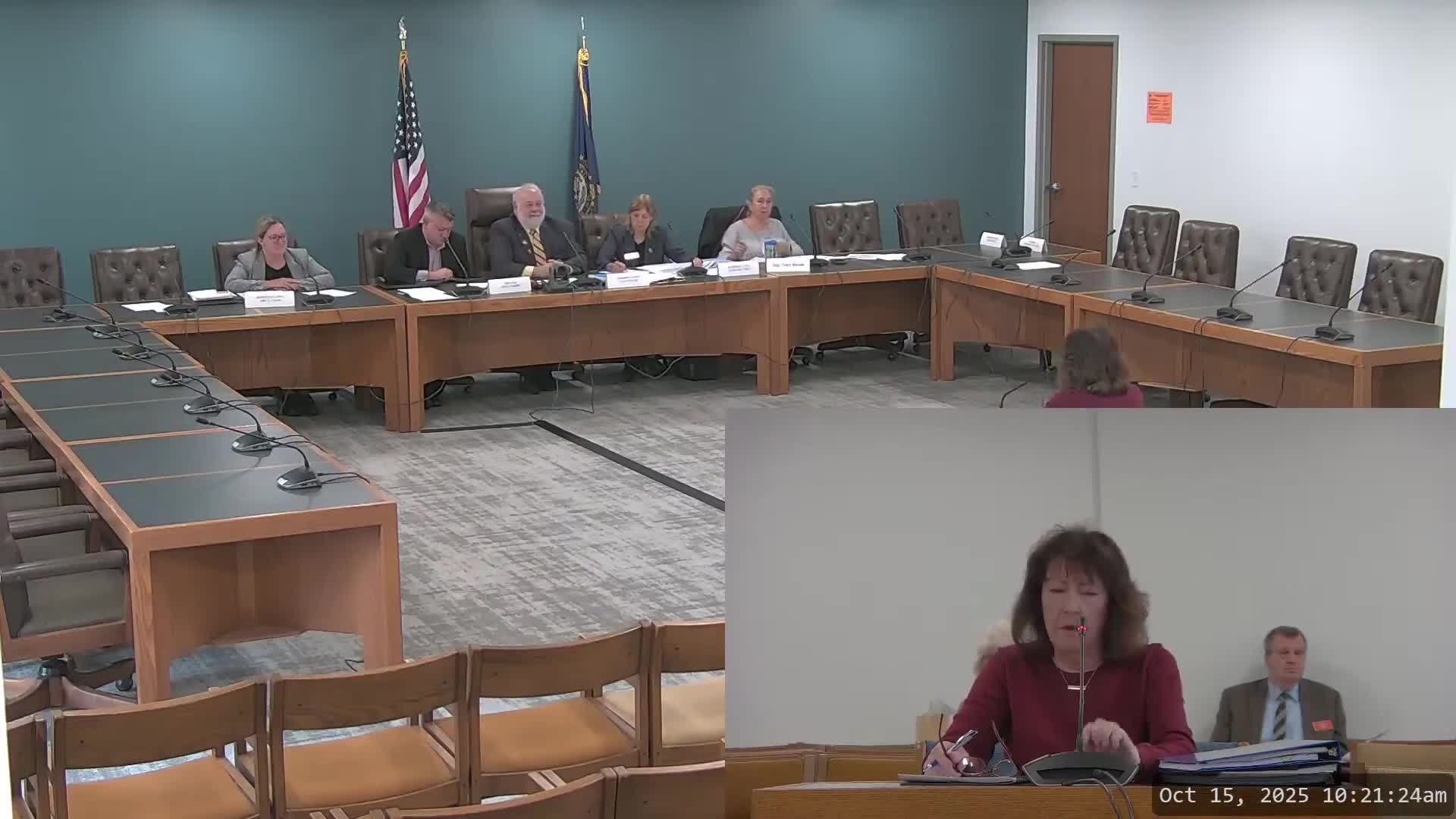Nottingham officials cite students and local control in decision to leave SAU 44
October 16, 2025 | Committee to Study Reducing the Number of School Administrative Units in the State, House of Representatives, Committees , Legislative, New Hampshire
This article was created by AI summarizing key points discussed. AI makes mistakes, so for full details and context, please refer to the video of the full meeting. Please report any errors so we can fix them. Report an error »

Nottingham school board member (and speaker) told the committee that the town left SAU 44 after a planning year and a one-year transition, and that the district now operates as a single-district SAU serving roughly 517 K–8 students plus preschool.
The district of Nottingham (Rockingham County, population about 5,300) described long-standing tuition contracts with Coe-Brown Northwood Academy and Dover Senior High School for secondary students. Nottingham officials said they previously paid roughly $800,000 into the SAU budget and provided locally for roles sometimes handled by SAUs (curriculum director, food service director, student services coordinator). After another district in the SAU decided to leave, Nottingham leaders examined their local capacity and elected to separate, conducting a one-year planning period followed by a one-year transition.
Nottingham officials said the district retained many local administrators and now houses preschool locally, which they said improved integration of students and early identification of service needs. The district reported student achievement above the New Hampshire average on a SAS score cited by a committee member — Nottingham at about 67% versus a New Hampshire average of about 55% — and said spending per pupil was below $20,000 while the state average cited by the committee chairman was about $22,050. Nottingham said it was entering its fourth year since the change and planned to move to a 65% superintendent position this year while developing internal candidates to step into leadership roles.
The Nottingham presentation emphasized that the decision was a “heavy lift” requiring close community engagement but that local control, closer proximity to students and stable local administrative capacity were important benefits for the district.
Attribution: statements about the district size, budgets, transition timeline and administrative arrangements were made by Miss Levinson, Nottingham School Board (presented as testimony to the committee).
The district of Nottingham (Rockingham County, population about 5,300) described long-standing tuition contracts with Coe-Brown Northwood Academy and Dover Senior High School for secondary students. Nottingham officials said they previously paid roughly $800,000 into the SAU budget and provided locally for roles sometimes handled by SAUs (curriculum director, food service director, student services coordinator). After another district in the SAU decided to leave, Nottingham leaders examined their local capacity and elected to separate, conducting a one-year planning period followed by a one-year transition.
Nottingham officials said the district retained many local administrators and now houses preschool locally, which they said improved integration of students and early identification of service needs. The district reported student achievement above the New Hampshire average on a SAS score cited by a committee member — Nottingham at about 67% versus a New Hampshire average of about 55% — and said spending per pupil was below $20,000 while the state average cited by the committee chairman was about $22,050. Nottingham said it was entering its fourth year since the change and planned to move to a 65% superintendent position this year while developing internal candidates to step into leadership roles.
The Nottingham presentation emphasized that the decision was a “heavy lift” requiring close community engagement but that local control, closer proximity to students and stable local administrative capacity were important benefits for the district.
Attribution: statements about the district size, budgets, transition timeline and administrative arrangements were made by Miss Levinson, Nottingham School Board (presented as testimony to the committee).
View full meeting
This article is based on a recent meeting—watch the full video and explore the complete transcript for deeper insights into the discussion.
View full meeting
